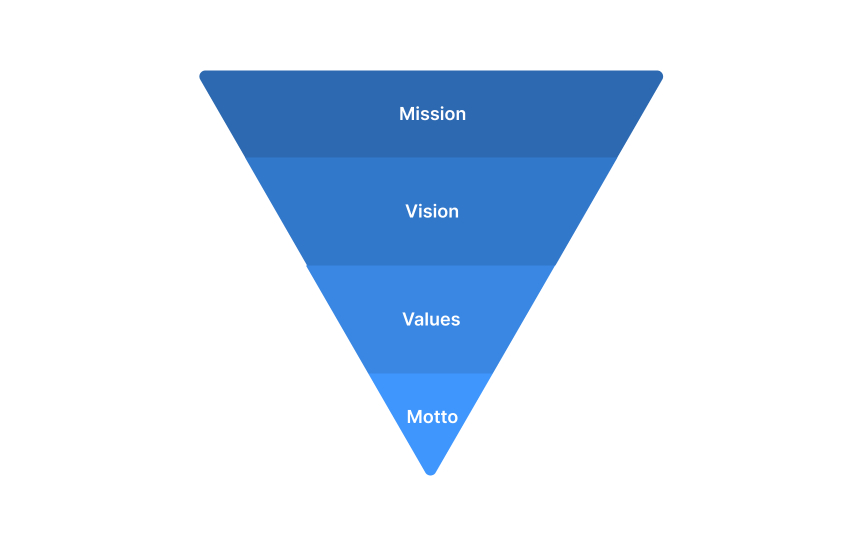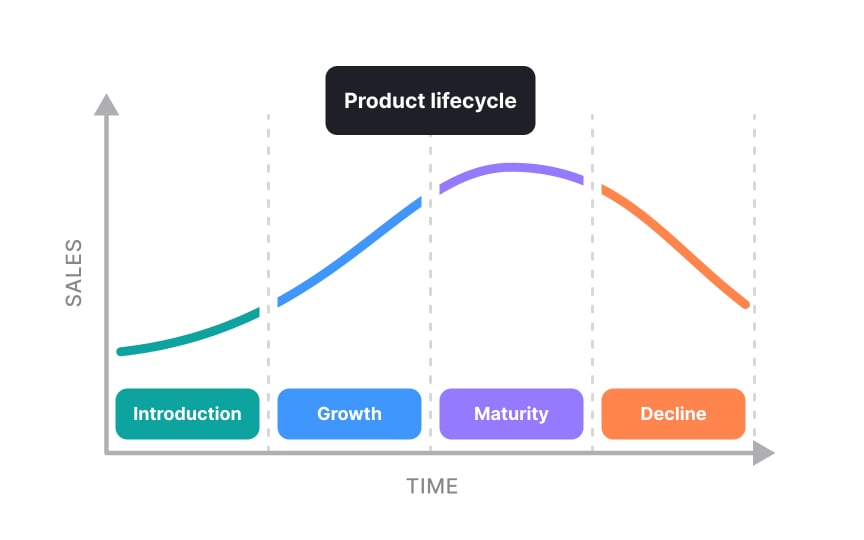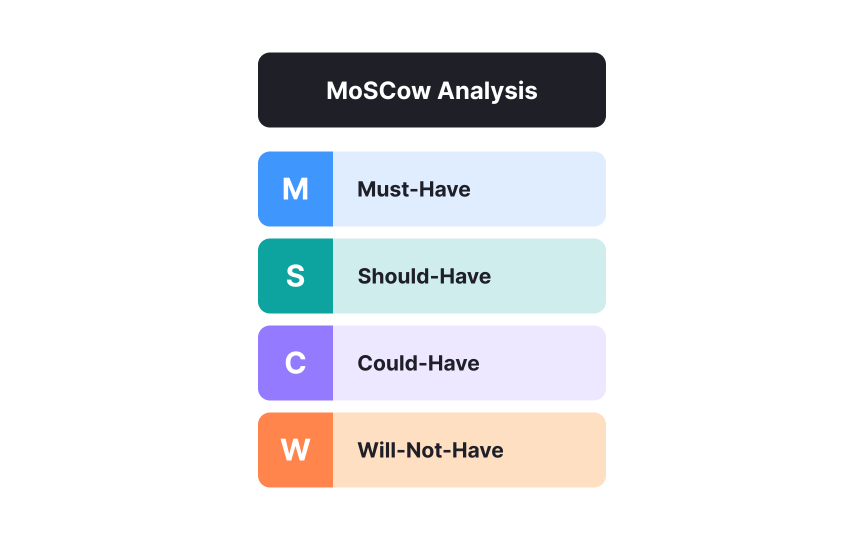Core Responsibilities of a Product Manager
Master the essential duties that define a successful product manager.
Product managers are like conductors of an orchestra - they don't play every instrument, but they ensure everyone works in harmony to create something valuable. At its heart, product management means bridging the gap between what users need and what businesses can deliver. Every day, product managers balance competing priorities from different teams, turn customer problems into clear requirements, and make tough decisions about what to build next. They need to speak the language of designers, engineers, marketers, and executives while keeping everyone focused and aligned on the same goals.
The best product managers combine analytical thinking with genuine empathy for users. They're comfortable with uncertainty and know when to rely on data versus intuition. While the role looks different across companies and industries, certain core responsibilities remain consistent. Getting these fundamentals right separates good products from great ones and can mean the difference between market success and failure.
Product managers serve as the strategic compass for their products. They craft a compelling vision that inspires teams and provides clear direction. Consider how the first product managers at Spotify envisioned a personalized music experience beyond simple streaming. They didn't just focus on the technical features of music delivery. Instead, they created a vision around discovering new music tailored to individual tastes. This strategic role means looking beyond immediate features to see the product's future position.
Good product managers balance short-term needs with long-term goals. They connect company objectives to specific product decisions that deliver real value. The visionary aspect requires staying informed about industry trends and customer behaviors. When Netflix shifted from DVD rentals to streaming, their product managers anticipated changing consumer preferences.[1]They maintained a realistic view of available resources while pushing toward an ambitious future state. Effective product managers create visions that both motivate teams and guide everyday decisions.
Product managers turn customer needs into clear requirements that teams can build. This translation is key to product success. Good requirements explain what problems to solve without forcing specific solutions. This gives teams room to be creative while making sure the final product helps users. Think about travel booking websites. Product managers didn’t just ask for “better search.” Instead, they wrote requirements based on what travelers are trying to do, like finding a place within a budget or with certain features. This approach connects with the Jobs to Be Done framework.
Users don’t just want to search. They want to find the cheapest option or book the best-reviewed hotel. It’s about the job they’re trying to get done, not just the feature they’re using.[2] Clear requirements prevent confusion that wastes time and effort. Whether using user stories, product requirement documents, or feature briefs, product managers make sure everyone knows what's being built and why. They check requirements through user research and data before starting development. The best product managers write requirements with enough detail to guide teams but keep them flexible enough to change when new information comes up during development.[3]
Product managers bring together people from different teams to build successful products. They work as connectors between design, engineering, marketing, sales, and customer support. This coordination role means speaking multiple "languages", which means understanding technical concerns from engineers, design principles from UX teams, and business goals from executives. A typical product development process shows this in action. When adding a new feature, product managers gather input from designers about usability, from engineers about technical feasibility, and from marketing about how to promote it. They don't need to be experts in all areas, but they must understand enough to make informed decisions and facilitate productive conversations.
Effective product managers build trust with each team by respecting their expertise while maintaining focus on user needs and business goals. They remove obstacles, resolve conflicts, and ensure information flows smoothly across teams. This leadership happens without formal authority, as most team members don't report directly to the product manager. The best product managers create an environment where different disciplines collaborate effectively toward shared objectives rather than working in isolated silos.
Product managers use data to guide their choices about what to build, improve, or remove. They look at both numbers (quantitative data) and user feedback (qualitative data) to make better decisions. This approach helps avoid personal bias and gut feelings that can lead products in the wrong direction. User behavior data shows patterns that might not be clear from just talking to customers. For example, tracking how people use an app reveals which features they actually use versus what they claim to value. Things like how often people engage, how many convert to paying customers, and how long they stay all give important clues about how well a product is working.
But numbers only tell part of the story. Good product managers also take part in user interviews, analyze feedback, and watch how people use the product. They ask "why" behind the numbers to truly understand what users want and where they struggle. Using both types of information creates a more complete picture. This data focus extends to measuring results. Product managers set clear success metrics before launching new features, then check if their changes actually achieved the intended goals. When results don't match expectations, they dig into why and make adjustments.[4]
Product managers must deeply understand their users and the market landscape. This research responsibility forms the foundation for product decisions and strategy. Rather than building products based on assumptions, effective product managers gather insights directly from users and market analysis.
Good product managers don't outsource all research to specialists. While they may work with dedicated researchers, they maintain regular direct contact with users themselves. This firsthand exposure builds
Product managers guide products through different stages from concept to retirement. Each phase needs different approaches. Understanding this lifecycle helps product managers use the right strategies at the right time.
The main phases of the product lifecycle include:
- Introduction phase: Validating ideas and finding product-market fit. Product managers run experiments, test
prototypes , and gather feedback. - Growth phase: Scaling features and expanding the user base. Product managers focus on performance and reaching more users.
- Maturity phase: Enhancing existing features and maintaining market position. The priorities shift to efficiency and defending against competitors.
- Decline phase: Deciding whether to refresh, pivot, or sunset the product
Product managers must:
- Recognize when a product moves from one phase to another
- Balance immediate needs with long-term health
- Prepare teams for changing priorities between phases
- Avoid treating all products the same, regardless of their maturity[5]
Product managers serve as the intersection point for many different stakeholders with competing priorities. This balancing act requires careful navigation and strong communication skills.
Key stakeholders product managers typically work with include:
- Users: Who need products that solve their problems effectively
- Engineering teams: Who have technical constraints and implementation concerns
- Business leaders: Who focus on revenue, market share, and strategic goals
- Sales and marketing: Who need sellable features and compelling stories
- Customer support: Who deal with user problems and feature requests
Each group has valid perspectives that contribute to product success. The
Effective product managers build trust with stakeholders by explaining the reasoning behind decisions, showing they've considered different viewpoints, and tying choices back to agreed-upon objectives. They create transparency around the prioritization process without getting stuck in endless debates or political maneuvering.
Pro Tip: Map out your key stakeholders and their primary interests to better anticipate conflicts and prepare for productive discussions.
Product managers make tough decisions about what to build now, what to build later, and what not to build at all. With limited time, money, and talent,
Effective prioritization involves:
- Evaluating impact: Assessing how features affect user needs and business goals
- Considering effort: Understanding the resources required for implementation
- Measuring opportunity cost: Recognizing what must be delayed by choosing one path
- Managing dependencies: Identifying which items must come before others
- Balancing short and long-term: Mixing quick wins with strategic investments
Product managers use various frameworks to guide these decisions, such as value vs. effort matrices, RICE scoring (Reach, Impact, Confidence, Effort), or the MoSCoW method (Must-have, Should-have, Could-have, Won't-have). The specific framework matters less than having a consistent, transparent approach.
Beyond feature prioritization, product managers allocate resources to maintenance, technical debt reduction, and innovation exploration. They work with engineering leaders to balance feature development against platform health and stability.
Pro Tip: Revisit your prioritization criteria regularly, ideally each quarter, to make sure they still align with business goals and market conditions. Don’t be afraid to adapt frameworks to fit your team’s context; they should guide decisions, not limit them.
Product managers drive ongoing enhancement of their products rather than treating launches as finish lines.
Continuous improvement involves several key practices:
- Monitoring performance: Tracking how features perform against expectations
- Gathering user feedback: Collecting insights about pain points and opportunities
- Analyzing usage patterns: Understanding how people actually use the product
- Running experiments: Testing changes to validate improvements
- Implementing incremental updates: Making regular small enhancements
The most effective product managers build improvement cycles directly into their workflow. They establish regular review points to assess what's working and what isn't, such as weekly data reviews or monthly retrospectives.
This approach differs from simply reacting to problems. Proactive product managers look for optimization opportunities even when things seem to be working well. They foster a culture where team members feel empowered to highlight issues and suggest enhancements.
Continuous improvement also means making difficult decisions about retiring or replacing features that no longer serve users effectively, regardless of their past success or the effort invested in creating them.
Pro Tip: Create a dedicated "improvement backlog" separate from new feature development to ensure enhancement ideas don't get lost.
Product managers define success metrics and track outcomes to evaluate product performance. This measurement responsibility ensures the team knows whether their efforts are achieving the intended results.
Effective measurement practices include:
- Setting clear KPIs: Establishing key performance indicators tied to product goals
- Creating measurement plans: Determining how and when to collect data
- Building dashboards: Developing accessible views of critical metrics
- Conducting impact analysis: Assessing how changes affect user behavior
- Sharing results: Communicating outcomes to stakeholders and teams
Good product managers look beyond vanity metrics to focus on indicators that truly reflect product health and business impact. They distinguish between leading indicators (that predict future performance) and lagging indicators (that confirm past success).
The measurement approach evolves throughout the product lifecycle. During the early stages, product managers might focus on acquisition and activation metrics. As products mature, retention,
References
- Case Study: Netflix’s Transition from DVD Rental to Streaming - Oxford Executive Institute | Oxford Executive Institute
Top contributors
Topics
From Course
Share
Similar lessons

Continuous Discovery Mindset

Business Outcomes vs. Product Outcomes






















